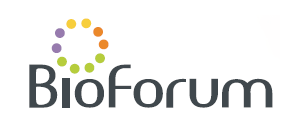Exploring polyoxometalate-gold nanorod strctures for SERS applications
Offer Zeiri, Analytical Chemistry, NRCN, Beer Sheva, Israel (offerz@nrcn.gov.il)
Katherine Hatzis, University Of Illinois, Urbana-chamapign, United States
Maurea Gomez, University Of Illinois, Urbana-chamapign, United States
Emily Cook, University Of Illinois, Urbana-chamapign, United States
Maegen Kincanon, University Of Illinois, Urbana-chamapign, United States
Catherine Murphy, University Of Illinois, Urbana-chamapign, United States
Placement of polyoxometalates (POM) molecules next to the surface of noble metallic nanoparticles has been found enhance the surface-enhanced Raman scattering (SERS) effect. The signal enhancement is believed to stem from either electrostatic attraction to the POM or chemical effects. Anisotropic gold nanorods have been established as useful nanostructures for SERS, mainly due to the high electric field enhancement at their ends. The presented work explores the use of a POM encapsulated gold nanorod for SERS, to assess whether the two enhancement pathways are synergetic.
The gold nanorod-POM composite was synthesized by coating cetyltrimethylammonium bromide-stabilized gold nanorods with a silicotungstic Keggin anion (through electrostatic attraction). The structure was throughly characterized, confirming that the gold nanorods have been fully encapsulated by the polyoxometalate. The SERS performance of the nanorod-PM structure was assessed in solution using crystal violet as a SERS indicator, obtaining an analytical enhancement factor of 1.8·104 in colloidal solution. The SERS enhancement mechanism of the structure was examined first by comparison to gold nanorods stabilized by a cetyltriethylammonium bromide bilayer, cationic thiol bound POM and polyelectrolyte coating. Next, composites made using POM molecules of different atomic composition and charge were examined. It was concluded that the POM charge had a noticeable effect on the enhancement while the atomic composition did not. Furthermore, higher enhancement is obtained in cases where the nanorod monolayer allows the sequestration of the dye molecule into the nanoparticle's ligand layer. The proposed enhancement mechanism therefore combines the negative charge of the POM attracting the positively charged dye molecules, and facilitating their sequestration within the ligand bilayer, closer to the nanorod's surface.
Organized & Produced by:

POB 4043, Ness Ziona 70400, Israel
Tel.: +972-8-9313070, Fax: +972-8-9313071
Site: www.bioforum.org.il,
E-mail: hagit@bioforum.co.il